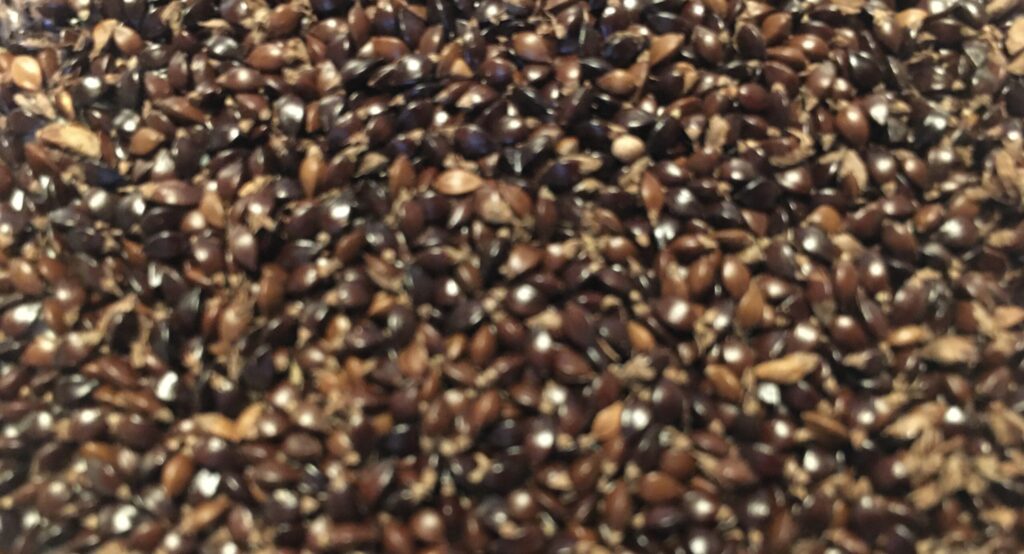
I have 3 kinds of TadeAi/Persicaria tinctoria seeds:
W – KojoukoAi – White flower
R – SenbonAi – Red flower
F – ChizimiAi- Curly leaf
There are many online resources explaining how to plant Persicaria tinctoria. Here are some tips I follow combining those information.
– Plant seeds in nursery/seeding pots before planting on the field
– Start seeding in end March/beginning April, let it grow in the seeding pot until end April, May
– Wait until the frosting season is over, then plant on the field
– Plant 3/5 seeds per seeding pot. cover seeds lightly with soil, and water well
On March 19th, I seeded 34 pots (5 seeds/pot) in Salzburg Austria. Let’s see how they grow. I will try to seed/plant in few different places in small batches this year to check which location has a good climate for Persicaria Tinctoria.
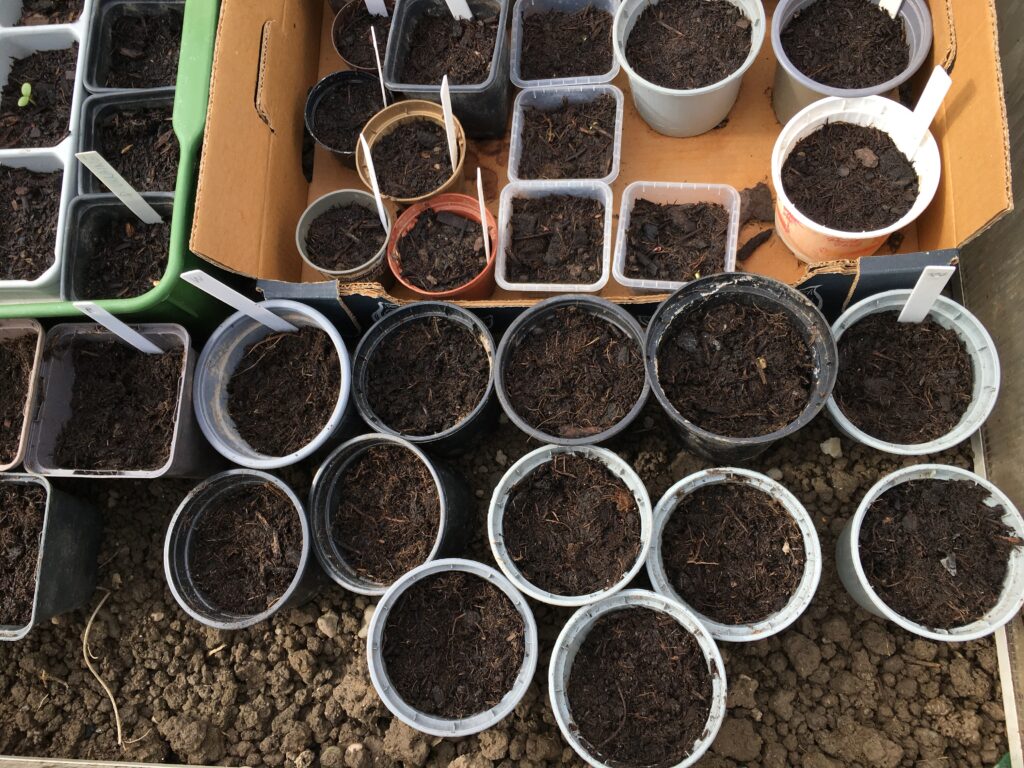
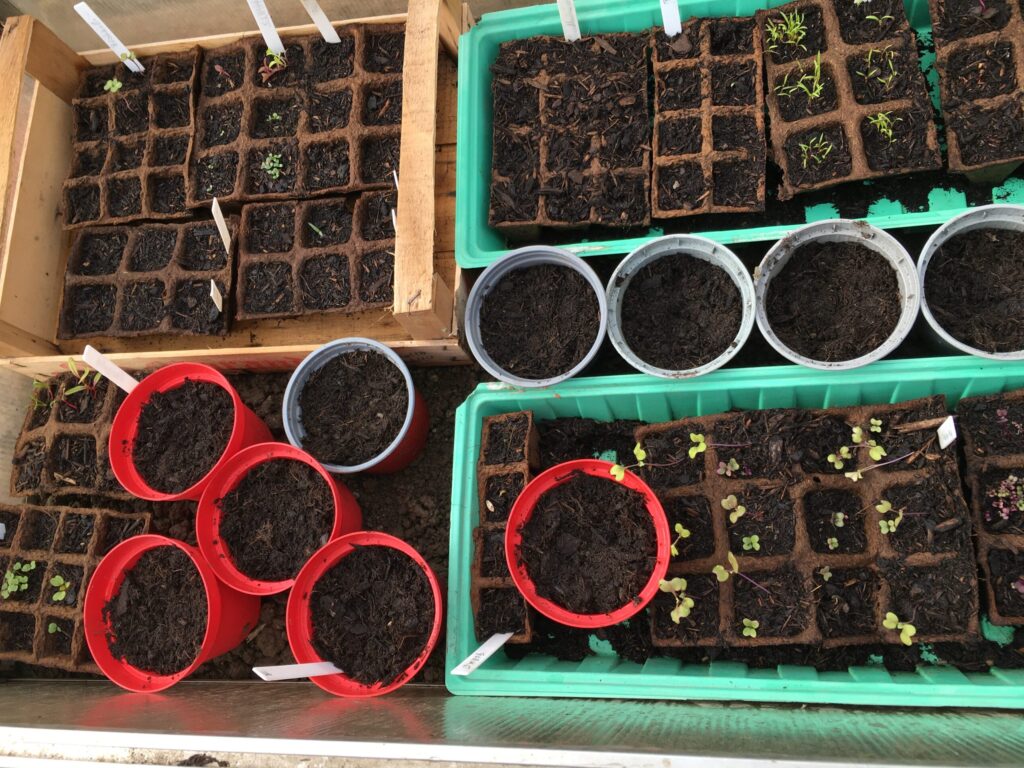
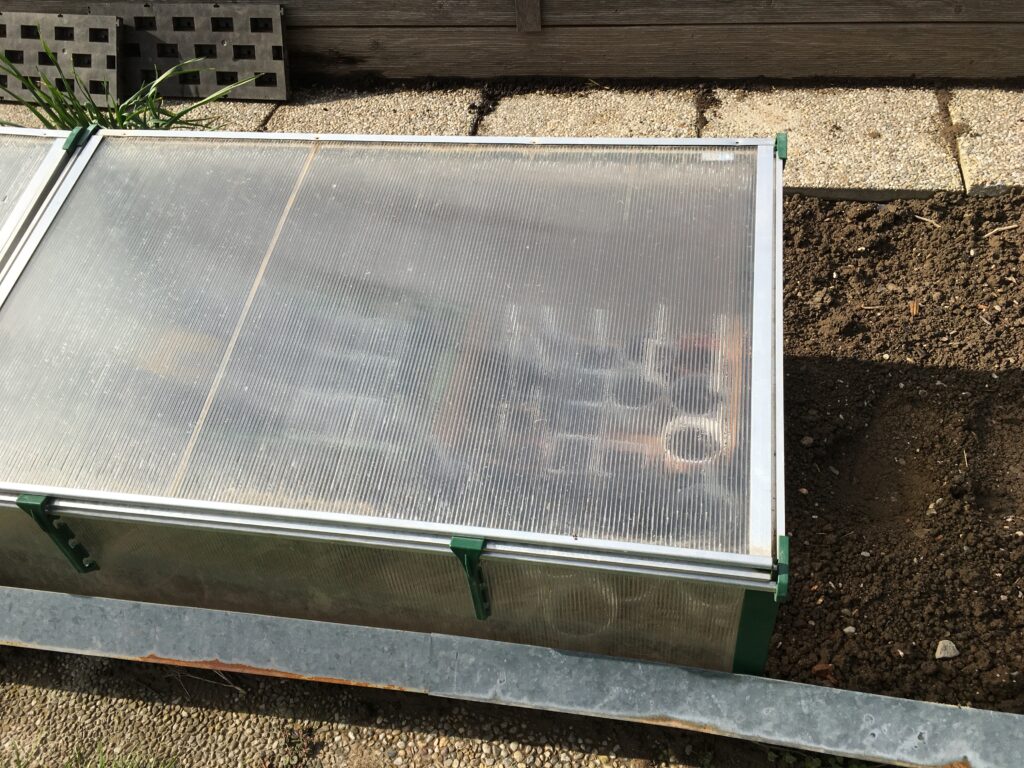
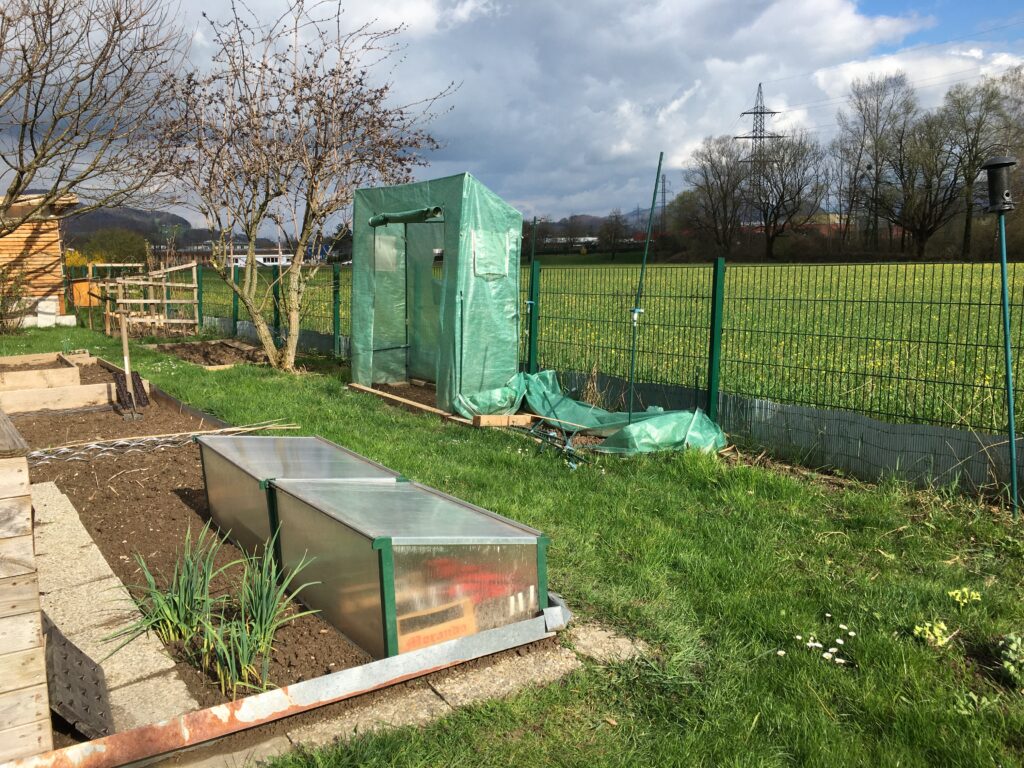
Snow-handmade studio is growing Persicaria Tinctoria in north part of Japan. As climate-wise similar to where I am (middle Europe), I take their method/timing as what I try this time.
This documentation from Hitotsuya studio is showing the details of each growing steps with helpful tips.
Some of the tips mentioned in the video (in Japanese subtitle):
March 21st
– Seeding time (this person is located in the Osaka/Japan region), It is the start of the spring day in the old calendar of Japan.
– Seed on the seedbed. Seed in line and cover the seeds lightly with soil
– cover the seedbed with plastic foil (or keep it in a big plastic bag). This will prevent birds and slugs from eating seeds and baby plants, also keep the moisture/warmth of the bed.
– after 1 week, the baby plants comes out. Take the plastic foil/bag out and let it stay in the spring sun. Make sure to water regularly (daily) so it does not dry out.
April 21st
– 2-3 weeks later, it grows to 10cm size. The moisture evaporates also from the leaves. Make sure to water plenty.
May 5th
– it is now 15-20cm big and it starts to get crowded in the seed bed.
– Time to transfer the plants to the field. Take the baby plants out of the seed bed and lightly wash the root.
– Make 10cm deep hole and place 5-6 plants in one hole. The tip is to place plants quite deep so they stand good. When it is too shallow, it often fall afterwards.
– Indigo plants later grows roots from joints from the stems, starts to grow side ways as well. Some people therefor plant them in angle. Here I plant them straight up as my field is not very big.
– 1 week before you plan to transfer the plants, it is a good idea to plow and fertilize the soil. I am fertilizing with Magnesium Lime, compost and oil cake. They are mixed well with plowed soil.
– The plants are placed 40cm a part. (placed in alternating level to make even more space)
June 21st
– entering June with rainy season (in Japan) the indigo plants starts to grow fast. When the plants starts to fall, place oil cake by the plants bottom, and place more soil around the plant so it has enough to hold. This makes the plants group to grow bigger. You can also make it like ridges.
– The first photo is from the beginning of June, the second one is form late June.
July 7th
– Time for 1st harvest
– Cut around 10cm from the bottom with garden scissors or with a sickle. When you fertilize after harvesting, it will grow back again after a month or so. This will be the 2nd harvest. If you repeat the fertilizing, you maybe able to harvest 3rd time as well.
– The 2nd and 3rd harvest contain less indigo compare to the 1st one. The harvested plants will flower, but will not make seeds. If you want to take seeds from your plants, make sure to leave some without harvesting for seeds taking.
Hopefully, if growing Persicaria tinctoria goes well, we can harvest in July-August. Here are how the harvesting look like. It will be a good idea to dry the plants and store the dry leaves for future sukumo/compost making.
Documentation from Fibershed project gives a very good detailed information about planting/growing indigo plants in English. This is also a good resource as well >> go to Fibershed page and download Indigo-sources-processes-possibilities-nov2017-revised.pdf from their link >> https://fibershed.org/programs/education-advocacy/indigo/
A World of Blue project is growing Persicaria tinctoria in Waldviertel Austria, so I guess the climate in Salzburg should also work. >> https://indigo.uni-ak.ac.at/category/waldviertel-austria/